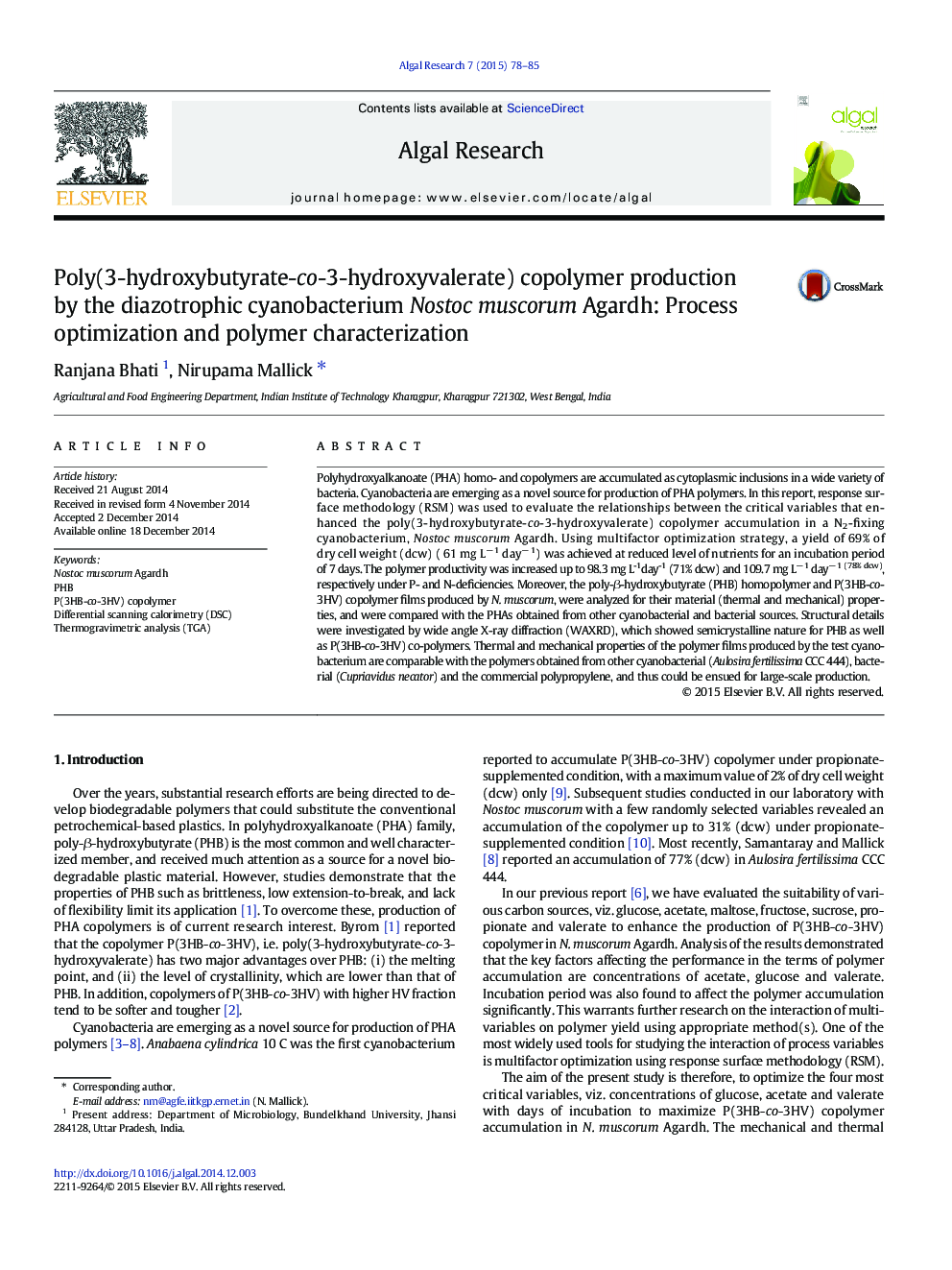| کد مقاله | کد نشریه | سال انتشار | مقاله انگلیسی | نسخه تمام متن |
|---|---|---|---|---|
| 1742047 | 1521825 | 2015 | 8 صفحه PDF | دانلود رایگان |

• Nostoc muscorum Agardh was found to accumulate P(3HB-co-3HV) co-polymer up to 78% of dry cell weight.
• This is the second cyanobacterium reported with such high polymer accumulating potential.
• The films showed comparable material properties with Cupriavidus necator polymers, the microbe at present in industrial use.
Polyhydroxyalkanoate (PHA) homo- and copolymers are accumulated as cytoplasmic inclusions in a wide variety of bacteria. Cyanobacteria are emerging as a novel source for production of PHA polymers. In this report, response surface methodology (RSM) was used to evaluate the relationships between the critical variables that enhanced the poly(3-hydroxybutyrate-co-3-hydroxyvalerate) copolymer accumulation in a N2-fixing cyanobacterium, Nostoc muscorum Agardh. Using multifactor optimization strategy, a yield of 69% of dry cell weight (dcw) ( 61 mg L− 1 day− 1) was achieved at reduced level of nutrients for an incubation period of 7 days. The polymer productivity was increased up to 98.3 mg L-1day-1 (71% dcw) and 109.7 mg L− 1 day− 1 (78% dcw), respectively under P- and N-deficiencies. Moreover, the poly-β-hydroxybutyrate (PHB) homopolymer and P(3HB-co-3HV) copolymer films produced by N. muscorum, were analyzed for their material (thermal and mechanical) properties, and were compared with the PHAs obtained from other cyanobacterial and bacterial sources. Structural details were investigated by wide angle X-ray diffraction (WAXRD), which showed semicrystalline nature for PHB as well as P(3HB-co-3HV) co-polymers. Thermal and mechanical properties of the polymer films produced by the test cyanobacterium are comparable with the polymers obtained from other cyanobacterial (Aulosira fertilissima CCC 444), bacterial (Cupriavidus necator) and the commercial polypropylene, and thus could be ensued for large-scale production.
Journal: Algal Research - Volume 7, January 2015, Pages 78–85